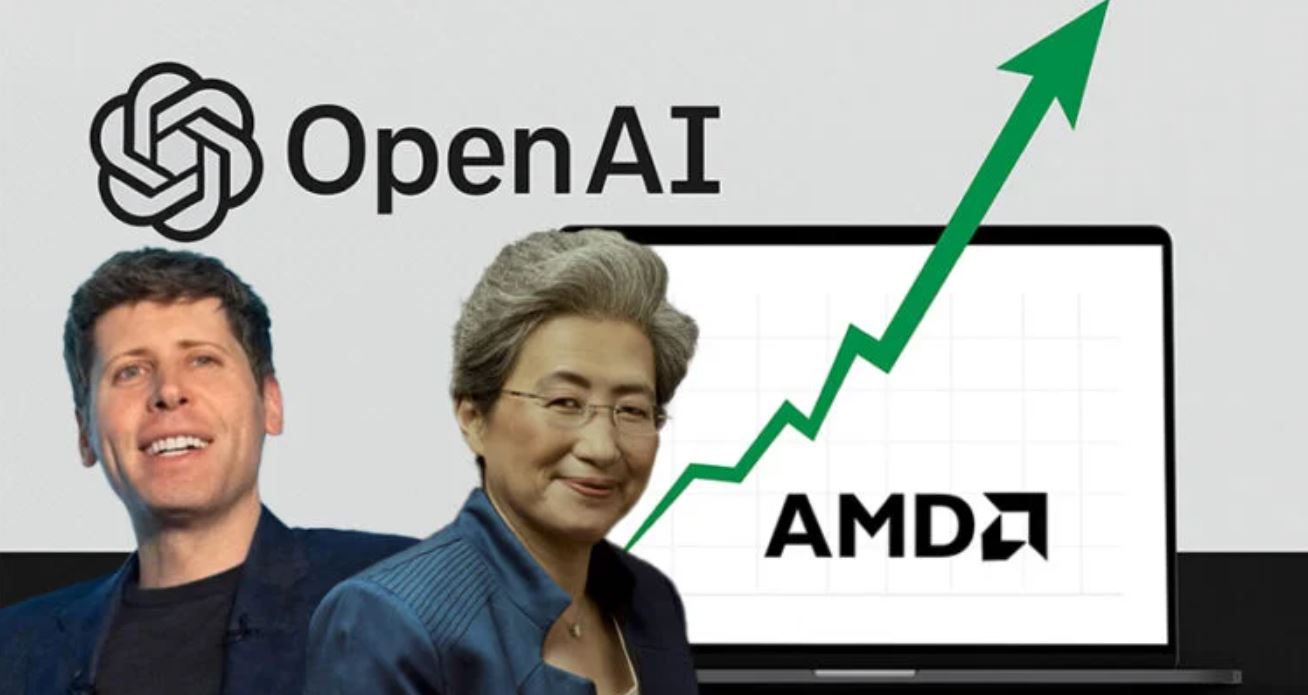Business
AMD Strikes Landmark AI Deal with OpenAI, Securing $10B+ GPU Supply Pact and Stock Surge

San Francisco, October 6, 2025 – In a seismic shift for the artificial intelligence hardware landscape, AMD and OpenAI unveiled a multi-year strategic partnership today that positions AMD as a cornerstone supplier of high-performance GPUs for OpenAI’s ambitious expansion. The agreement commits OpenAI to deploying a staggering 6 gigawatts of AMD Instinct GPUs across multiple hardware generations, with an initial rollout of 1 gigawatt from the AMD Instinct MI450 series slated for the second half of 2026.
The deal, valued at over $10 billion based on industry estimates, not only cements AMD’s role as a primary AI compute partner for the ChatGPT creator but also marks a bold diversification of OpenAI’s chip ecosystem. Long reliant on Nvidia’s dominance in AI accelerators, OpenAI’s move underscores a broader industry push to mitigate supply chain risks amid skyrocketing demand for AI infrastructure.
Under the terms, OpenAI gains an exclusive option to acquire up to a 10% stake in AMD through performance-based stock warrants, contingent on hitting key deployment milestones. “This partnership is a testament to AMD’s innovation in AI silicon and our shared vision for democratizing access to powerful compute,” said Lisa Su, AMD’s CEO, in a prepared statement. “We’re thrilled to power OpenAI’s next era of breakthroughs.”
Wall Street’s Roaring Response
The announcement sent AMD shares skyrocketing, climbing 28% in midday trading to close at a record high—the company’s strongest single-day gain since 2016. Investors hailed the pact as a multi-billion-dollar lifeline in the red-hot AI chip wars, where Nvidia has commanded over 80% market share. “AMD just landed the whale it’s been chasing,” said Wedbush Securities analyst Daniel Ives. “This isn’t just revenue; it’s validation of AMD’s tech stack challenging Nvidia head-on, especially in inference workloads where efficiency matters.”
The surge reflects mounting optimism around AMD’s ability to capture a slice of the $200 billion-plus AI infrastructure spend projected by 2027. For OpenAI, the deal arrives at a critical juncture as it scales operations to support increasingly complex models, including potential successors to GPT-4.
AMD’s Sharpening AI Arsenal
At the heart of the partnership lies AMD’s evolving AI portfolio, blending raw power with energy smarts. The Instinct MI450 GPUs, built on AMD’s latest CDNA 4 architecture, promise up to 50% better performance per watt compared to prior generations, ideal for OpenAI’s data-center behemoths. Complementing this are AMD’s Ryzen AI processors for edge computing and the open-source ROCm software stack, which rivals Nvidia’s CUDA in developer adoption.
“AMD excels at that sweet spot of performance and efficiency across CPUs, GPUs, and NPUs,” noted Forrester Research principal analyst Mike Gualtieri. “For OpenAI, this means faster inference at lower costs—crucial as AI shifts from training marathons to real-time applications.”
A Ripple Effect in AI Supply Chains
The AMD-OpenAI alliance is more than bilateral; it’s emblematic of a diversification frenzy gripping Big Tech. OpenAI has ramped up collaborations with Samsung and SK Hynix for advanced memory solutions and TSMC for cutting-edge fabrication, aiming to fortify its hardware backbone against geopolitical tensions and chip shortages.
Nvidia remains the undisputed king of AI training, but AMD’s foothold in inference—the deployment phase where models serve billions of queries—could erode that edge. “We’re seeing hyperscalers like OpenAI build moats around multi-vendor strategies,” said Gartner VP of Research, Tripp Norton. “AMD’s win here signals the duopoly era is over; expect more such pacts to reshape the $500 billion AI hardware market by decade’s end.”












